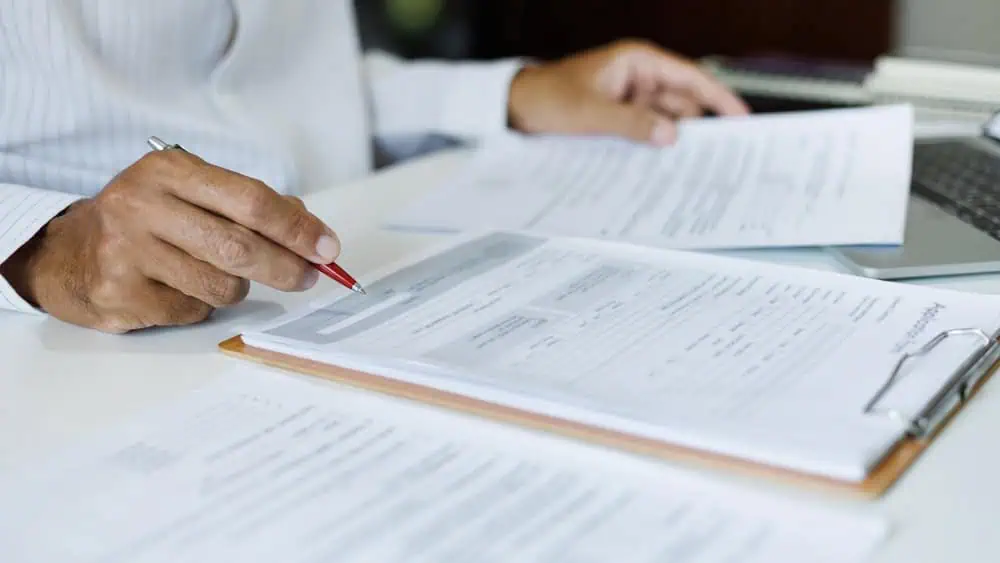When it comes to shipping a car overseas, one of the first things that you…

The Essential Buying a Classic Car Checklist
Owning a classic car is a unique experience, but finding and purchasing your dream vehicle can feel overwhelming. Without a clear roadmap, it’s easy to run into unexpected costs or hidden issues. That’s why we have put together this simple yet effective checklist to guide you through the process, so you can shop with confidence and get your new pride and joy home safely.
What Is a Classic Car?
A classic car is typically defined as a vehicle that’s at least 20 to 30 years old, but there is more to it than just age. Key definitions of a ‘classic vehicle’ vary from state to state and between different insurance providers, with some focusing on historical value or rarity and others looking at originality or limited production. These differences can affect everything from how your car is registered to how it’s insured or transported.
Iconic models, such as muscle cars, often fall into the ‘classic car’ category due to their unique performance heritage and collector appeal.
Why Consider Classic Car Ownership?
Owning a classic vehicle can provide a real sense of satisfaction, connecting you to the past and letting you experience a piece of history firsthand. For many, it’s a rewarding hobby that combines passion with a sense of nostalgia, and even offers the chance for a good investment.
Classic car ownership can also open doors to a passionate community, with regular car shows and friendly meetups where you can share stories and celebrate your vehicles together.
Why a Buying Checklist Is Important
While buying a classic car is exciting, it can also prove tricky, with lots of details to consider if you want to avoid any costly surprises down the road. A checklist will help you to stay organized and on track as you make your purchase.
So, here’s our essential classic car buying checklist to walk you step-by-step through the process:
The Essential Classic Car Buying Checklist
Pre-Purchase Steps
1. Preparation & Research
Before you even begin your search for a suitable car, you should carry out some careful preparation and research to get to know more about the classic car world. This initial stage helps you to define your ideal classic car, thinking carefully about everything from the specific make and model, to its intended use, whether that be for fun, relaxed weekend drives, participating in car shows, or even flipping for a profit. Do you see yourself with a convertible, a luxury sedan or maybe a muscle car with some serious power?
You should also research common issues, typical maintenance needs, and the availability and cost of parts for your chosen vehicle, as these can vary wildly. Then, set a realistic budget which factors in additional costs such as potential immediate repairs, ongoing maintenance, insurance, and crucially, the cost of professional vehicle shipping to get your new car home.
It’s also worth taking time to find a trustworthy dealership or a private seller with a good reputation as this can make all the difference to your buying experience. The more prepared you are, the better choices you’ll make.
2. Pre-Purchase Car Inspection
A thorough inspection is a must before buying any classic car. It helps to uncover hidden issues, such as signs of oil leaks, flood damage, rust, worn upholstery, or faulty accessories, and gives you a clearer picture of the vehicle’s true condition.
Ideally, get a trusted mechanic or classic car specialist to inspect everything closely, from the engine compartment and tires to the paint work, dashboard, interior, seats, rocker panels and body panels, so you can potentially save yourself from costly repairs down the line. They should pay close attention to details such as the tire tread, whether all tires are the same brand, if there’s a spare tire and whether the wipers and heater work. Additionally, they should be on the look out for any signs of shoddy repairs.
3. The All-Important Test Drive
Taking the classic car for a spin is your chance to feel how it handles and spot any issues that don’t show up on paper. You should pay attention to the engine’s performance, brakes, steering, and suspension. Listen out for any unusual noises, check that the transmission shifts smoothly and see how the car feels going around corners. A good test drive will help you to make an informed decision on your purchase and make sure that you are spending your money wisely.
4. Documentation & History Verification
Evidence of the correct paperwork and documentation is just as important as the car itself. Always review the title, ownership records, service history, and any restoration notes. You can check online databases using the vehicle identification number (VIN) to uncover past accidents, mileage discrepancies, or any legal issues that are tied to the car’s history.
Up-to-date paperwork can help confirm the authenticity of a vehicle and even add value. It shows the car has been properly cared for by the previous owner and gives you a clearer picture of its journey over the years. While gaps in the paperwork or inconsistent mileage could signal an underlying problem.
5. Obtain a Valuation & Negotiate a Purchase Price
Before agreeing on a purchase price, you need to make sure you understand the current market value of the specific make, model, and condition of the classic car you’re considering.
Don’t rely solely on the seller’s asking price; instead, use reliable classic car valuation tools, auction results, and similar listings to guide you. If the car has rare features, documented history, or is in exceptional condition, it may justify a higher price, but don’t be afraid to strike a fair deal as you don’t want to overpay for your investment.
6. Factor in Ownership Costs
You will also need to budget for ongoing costs associated with owning a classic vehicle, for example, costs to maintain the car, the price of future repairs, insurance and fuel fees. Don’t forget to decide where you’ll store your classic car too; a secure garage can protect it from the elements and help to maintain its value, but storage costs can quickly add up, so factor them in early.
Classic cars often require specialized care and parts that can be pricey or hard to find, so it pays to be realistic about what owning one will cost you over time. It might be worthwhile setting aside some money to fund unexpected repairs, just in case something crops up when you least expect it.
Post-Purchase Planning & Preparing for Car Shipping
Once the sale is done, your work isn’t quite over. You will still need to make some smart plans to protect your investment and get your classic car safely to its new home. That includes arranging insurance, tax, servicing, and organizing secure vehicle transport.
Insurance & Initial Servicing
After securing your purchase, you will need to ensure that your new classic car is properly insured. Check out specialist classic car policies, as they often offer better coverage which is tailored to vintage cars. You will also need to tax the vehicle if it is going to be driven on public roads, but be sure to check out the local rules carefully as these can vary depending on the age and classification of your classic vehicle.
At this stage you should also arrange an initial service to check key things such as fluid levels, brakes, electrics and tires.
Getting Your New Classic Car Ready for Shipping
You now have your brand-new classic car, which is fully insured, serviced, and ready to go. The final step is organizing a classic car shipping service to safely transport your vehicle home. A specialist car shipping company will help you to transport your newly purchased classic car safely.
For classic vehicles, enclosed car shipping can provide the ultimate level of protection and peace of mind. By transporting your vehicle in an enclosed shipping container, your vehicle remains shielded from adverse weather conditions, road debris, and dust throughout its entire journey, ensuring that it arrives at your destination in the same pristine condition it left in.
Preparing Your Vehicle for Car Shipping
Before shipping, make sure that your classic car is adequately prepared. This means cleaning it inside and out, removing any personal belongings, and securing or removing any loose parts or accessories.
You should also check that the fuel tank is no more than a quarter full for safety, and disconnect the battery if the car shipping company requires you to do this. Taking these steps can help to avoid any issues during transit and ensure a smooth handover of your vehicle.
Ready to Ship Your Classic Car with CFR Classic?
Once you have successfully purchased your prized classic vehicle, CFR Classic is here to offer our expert advice and reliable car transport services to get your car home safely and smoothly. Our enclosed car shipping services provide the ultimate protection for your investment, shielding your classic from external elements and ensuring its pristine condition upon arrival.
Contact CFR Classic today for a guaranteed online quote within 24 hours or to find out more information about our trusted classic car shipping services.





